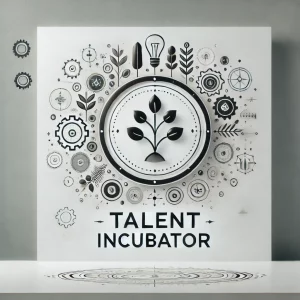 Ignore the outdated debate about AI replacing humans. The future is not man vs. machine, but rather a powerful collaboration, humans and AI working together to unlock new possibilities. Where AI isn’t seen as a competitor but as the ultimate ally. From helping developers write better code to enhancing customer service interactions in real time, AI is revolutionizing work by amplifying human capabilities. This isn’t just another tech trend, it’s a seismic shift transforming workplaces globally, and those who embrace it are reaping the rewards.
Ignore the outdated debate about AI replacing humans. The future is not man vs. machine, but rather a powerful collaboration, humans and AI working together to unlock new possibilities. Where AI isn’t seen as a competitor but as the ultimate ally. From helping developers write better code to enhancing customer service interactions in real time, AI is revolutionizing work by amplifying human capabilities. This isn’t just another tech trend, it’s a seismic shift transforming workplaces globally, and those who embrace it are reaping the rewards.
AI: The Co-Pilot, Not the Pilot
The New Dynamic: AI-human collaboration is shifting the way industries operate. AI isn’t taking the lead, it’s providing the necessary support, handling repetitive tasks so humans can focus on strategic and creative work. In every role, from marketing to engineering, AI augments human skills, empowering us to perform at our best.
- The Developer’s Perspective: In software development, tools like GitHub’s Copilot are invaluable. AI-powered systems suggest code, spot errors, and even automate routine processes. But the developer’s creativity, problem-solving skills, and critical thinking still drive the innovation. The challenge for leaders lies in integrating AI without losing the human element that powers breakthroughs.
- Real-World Example: GitHub’s Copilot demonstrates the perfect balance, AI offering coding suggestions while developers focus on solving complex issues. It accelerates development while keeping humans in charge of the creative process.
AI as the Ultimate Assistant in Customer Service
- Efficiency with a Human Touch: AI is transforming customer service by handling routine inquiries, freeing human agents to focus on building meaningful connections with customers. Imagine a rep equipped with an AI assistant that sorts through requests, answering repetitive questions while directing more complex issues to humans. This isn’t about eliminating jobs but enhancing them, allowing teams to engage in higher-value interactions.
- How Leaders Can Take Action:
- Automate Routine Tasks: Use AI-driven chatbots to manage high-volume, low-impact queries, freeing up human agents for nuanced conversations.
- Focus on Training: Equip your team with the skills to leverage AI tools effectively, ensuring the human touch remains where it matters most.
- Maximize Synergy: Use AI insights to guide customer interactions, making every conversation personalized and efficient.
- Real-World Example: Delta Airlines is leading the way, using AI-driven platforms to assist with everything from bookings to in-flight services. Their AI systems streamline the process, while humans ensure that empathy and personalized care are always present.
The Synergy of Human-AI Teams Across Industries
- Expanding Horizons: Beyond software and customer service, AI-human collaboration is redefining sectors like healthcare and finance. In medicine, AI assists doctors with diagnostics, while in finance, AI helps analysts predict market trends. What’s clear across these fields is that AI’s role is to enhance, not to replace, the expertise humans bring to the table.
- Strategic Impact: By combining human intuition with AI’s data-driven insights, businesses are making faster, more accurate decisions. For instance, Mayo Clinic’s AI-driven models help doctors provide personalized treatment plans, improving patient outcomes dramatically.
- Future Trends: As AI becomes more integrated into everyday tasks, we’ll see even more seamless collaboration. The future workplace will have AI embedded in nearly every function, with humans providing strategic direction and ethical oversight.
The Challenge and Opportunity Ahead
- Facing the Future with Confidence: AI is changing the way we work, and with it comes challenges, job displacement fears, learning curves, and ethical dilemmas. But this is also a massive opportunity to rethink and reshape work as we know it. Leaders who are proactive will harness AI to create new roles, improve work-life balance, and push the boundaries of what their teams can achieve.
- A New Paradigm: AI doesn’t diminish human value, it elevates it. By integrating AI into everyday tasks, we’re not just making work more efficient; we’re making it more meaningful. The potential for innovation is staggering, but only if we embrace AI as a tool for empowerment rather than competition.
The real future of work isn’t about AI replacing humans, it’s about humans and AI driving progress together. Organizations that adopt this mindset will be at the forefront of innovation, leading industries into a new era of possibility. The question isn’t whether AI will transform your workplace, but how you’ll embrace this revolution to unlock your full potential.

 “If you’re not taking risks, you’re not growing.” We’ve all heard some variation of this phrase, and while it may sound like a cliché, it’s a reality that every successful professional knows all too well. But what does it really mean to take risks in your career? Why is it crucial for your growth, and how do you know which risks are worth taking?
“If you’re not taking risks, you’re not growing.” We’ve all heard some variation of this phrase, and while it may sound like a cliché, it’s a reality that every successful professional knows all too well. But what does it really mean to take risks in your career? Why is it crucial for your growth, and how do you know which risks are worth taking? The tech industry is often hailed as the backbone of modern innovation, propelling society forward with groundbreaking advancements. Yet, behind the sleek interfaces and seamless user experiences lies a silent struggle that too many professionals face: mental health challenges. As the sector continues to grow at an unprecedented rate, it’s time we confront the elephant in the room, mental health in tech.
The tech industry is often hailed as the backbone of modern innovation, propelling society forward with groundbreaking advancements. Yet, behind the sleek interfaces and seamless user experiences lies a silent struggle that too many professionals face: mental health challenges. As the sector continues to grow at an unprecedented rate, it’s time we confront the elephant in the room, mental health in tech. Cast your mind back and try to remember the first time you felt overwhelmed by the complexities of a new technology role, facing a problem you didn’t yet know how to solve. Now imagine having someone experienced, guiding you through, offering advice, and helping you see a way forward. That’s the power of mentorship.
Cast your mind back and try to remember the first time you felt overwhelmed by the complexities of a new technology role, facing a problem you didn’t yet know how to solve. Now imagine having someone experienced, guiding you through, offering advice, and helping you see a way forward. That’s the power of mentorship.

 Great leaders don’t just manage tasks, they inspire, guide, and nurture their teams to grow and succeed. Yet, many leaders still rely on a traditional management style focused on oversight and control. The true power of leadership lies not in managing but in mentoring. Imagine the transformative impact of shifting from being a manager to becoming a mentor, where both sides benefit by fostering talent, driving innovation, and creating an environment where people thrive together.
Great leaders don’t just manage tasks, they inspire, guide, and nurture their teams to grow and succeed. Yet, many leaders still rely on a traditional management style focused on oversight and control. The true power of leadership lies not in managing but in mentoring. Imagine the transformative impact of shifting from being a manager to becoming a mentor, where both sides benefit by fostering talent, driving innovation, and creating an environment where people thrive together. The seamless coordination of IT Service Management (ITSM) and the Project Management Office (PMO) has become a pivotal element in the success of business transformation initiatives. As organizations evolve, ensuring that IT and project teams work efficiently together can be the difference between smooth project execution and operational bottlenecks. But how do you ensure collaboration thrives, particularly when departmental conflicts and resource constraints emerge?
The seamless coordination of IT Service Management (ITSM) and the Project Management Office (PMO) has become a pivotal element in the success of business transformation initiatives. As organizations evolve, ensuring that IT and project teams work efficiently together can be the difference between smooth project execution and operational bottlenecks. But how do you ensure collaboration thrives, particularly when departmental conflicts and resource constraints emerge?
